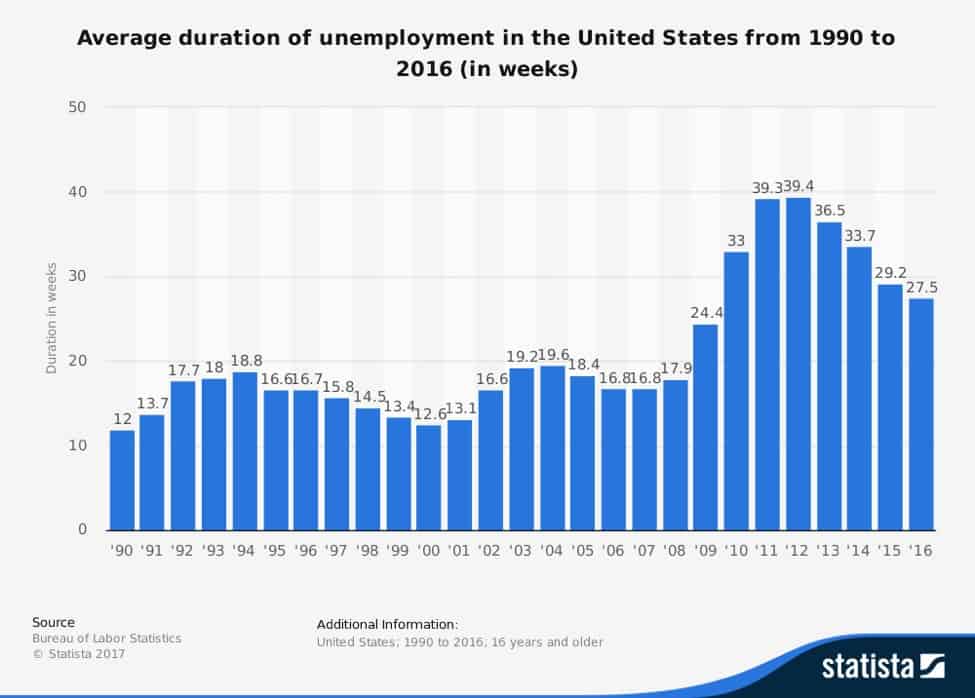Problem:
The percentage of jobless workers receiving unemployment insurance (the recipiency rate) has declined by 25 percent since immediately before the Great Recession.
Solution:
States Should Maintain the Historic 26-Week Maximum Duration for UI Benefits.
In 2016, only 27 percent of unemployed workers received unemployment insurance (UI) —a near historic low—compared with 36 percent in 2007. In 2007, only two states paid benefits to less than 20 percent of unemployed workers. By 2016, that figure had grown to 12 states. Since 2011, nine states have significantly reduced the maximum weeks of benefits below 26 weeks, the national standard for more than 50 years. Five of the six states with the deepest recipiency declines over the past ten years cut maximum weeks of benefits. Cuts in maximum weeks accounted for roughly 30 percent of the decline in the national recipiency rate.
Economists studying the UI system have long recommended that 26 weeks should be the maximum benefit duration for state UI systems. While nine states have reduced the 26-week maximum duration, capping claimants at a lower number of weeks, 41 others have maintained it. The federal-state Extended Benefits (EB) system operates on an assumption that states will provide 26 weeks, so states providing less weeks will qualify for a proportionately smaller share of the 13 EB weeks (or other federal benefits provided by ad hoc Congressional extensions) provided during periods of high unemployment. As some states have reduced the adequacy of benefits by cutting the maximum duration of UI benefits, the average length of unemployment has actually been increasing. The average unemployed worker was out of work for 27.5 weeks in 2016, more than 10 weeks longer than the average duration of 16.8 weeks in 2007, before the recession began.
Cutting short the weeks of available benefits leaves jobless workers racing the clock and taking jobs that pay less than the ones they lost, increasing the number of families economically scarred because a breadwinner experienced a period of joblessness. It also allows lower-week states an unfair advantage in accessing federal UI benefits during periods of high unemployment.


